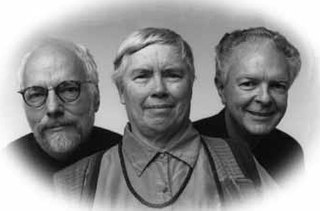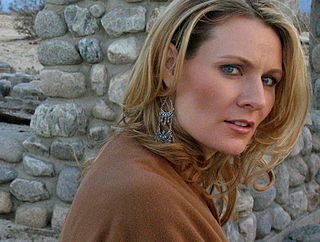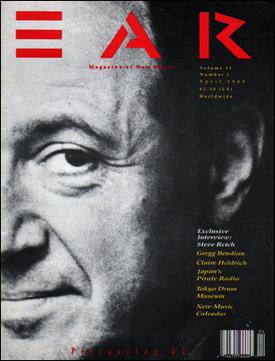Related Research Articles
Trudi Le Caine, CM was an arts patron involved with local and national arts initiatives in Ottawa, Ontario, Canada.

Pauline Oliveros was an American composer, accordionist and a central figure in the development of post-war experimental and electronic music.

The Deep Listening Band (DLB) was founded in 1988 by Pauline Oliveros, Stuart Dempster and Panaiotis. David Gamper replaced Panaiotis in 1990.

Hugh Le Caine was a Canadian physicist, composer, and instrument builder.

In Canada, classical music includes a range of musical styles rooted in the traditions of Western or European classical music that European settlers brought to the country from the 17th century and onwards. As well, it includes musical styles brought by other ethnic communities from the 19th century and onwards, such as Indian classical music and Chinese classical music. Since Canada's emergence as a nation in 1867, the country has produced its own composers, musicians and ensembles. As well, it has developed a music infrastructure that includes training institutions, conservatories, performance halls, and a public radio broadcaster, CBC, which programs a moderate amount of Classical music. There is a high level of public interest in classical music and education.
Alexander Brott,, born Joël Brod, was a Canadian conductor, composer, violinist and music teacher.

John Beckwith was a Canadian composer, writer, pianist, teacher, and administrator.

Julian Armour, is a Canadian cellist and artistic director. Armour is married to violist Guylaine Lemaire. He is the son of the philosopher Leslie Armour.

The Schulich School of Music is one of the constituent faculties of McGill University in Montreal, Quebec, Canada. It is located at 555, Rue Sherbrooke Ouest. The faculty was named after the benefactor Seymour Schulich.
Diedre Murray is an American cellist and composer specializing in jazz and musical theater. She also works as a record producer and curator.

Donald Richard "Don" Whitton was a Canadian concert cellist, recording musician, and teacher, with a professional career in music spanning over 50 years.

Brenda Hutchinson is an American composer and sound artist who has developed a body of work based on a perspective about interacting with the public and non-artists through personal, reciprocal engagement with listening and sounding. Hutchinson encourages her participants to experiment with sound, share stories, and make music. She often bases her electroacoustic compositions on recordings of these individual collaborative experiences, creating "sonic portraits" or "aural pictures" of people and situations.

OHM: The Early Gurus of Electronic Music is a compilation of early electronic music and excerpts from 1948 to 1980. Many works are essentially experiments with sound, using a variety of non-traditional instruments including homemade circuits, tape ribbon, and early synthesisers.

Dana Reason is a Canadian composer, recording artist, keyboardist, producer, arranger, and sound artist working at the intersections of contemporary musical genres and intermedia practices.

Joseph Leopold Smith was an English composer, writer, music critic, music educator, and cellist who was primarily active in Canada. His compositional output consists of works for cello, piano, choir and orchestra and a considerable amount of chamber music.
Musicworks is a Canadian avant-garde music magazine, launched in January 1978 by Andrew Timar (editor-in-chief) and John Oswald.
The International Alliance for Women in Music (IAWM) is an international membership organization of women and men dedicated to fostering and encouraging the activities of women in music, particularly in the areas of musical activity, such as composing, performing, and research, in which gender discrimination is a historic and ongoing concern. In the U.S. the organization operates as a 501(c)3 non-profit. The IAWM engages in efforts to increase the programming of music by female composers, to combat discrimination against female musicians, including as symphony orchestra members, and to include accounts of the contributions of women musicians in university music curricula and textbooks.

Ear Magazine was a monthly music magazine devoted to new music. The magazine was in circulation between 1973 and 1991. It often dealt with musical applications of feminism, politics, and the environment. It was also notable for its extensive listings of new music events in the Bay Area, and later, New York.
Nina C. Young is an American electro-acoustic composer of contemporary classical music who resides in New York City. She won the 2015 Rome Prize in musical composition, a 2021 Guggenheim Fellowship, and a 2014 Charles Ives Prize from the American Academy of Arts and Letters.
References
- ↑ "Gayle Yong". The Canadian Encyclopedia.
- ↑ "Gayle Young". AllMusic Biography by Joslyn Layne
- ↑ IAWM Journal. Vol. 7–8. The Alliance. 2001. p. 30.
- ↑ Pamela Jones (2007). Alcides Lanza: Portrait of a Composer. McGill-Queen's Press – MQUP. p. 172. ISBN 978-0-7735-6048-2.
- ↑ Music Magazine. Vol. 12–13. Barrett & Colgrass. 1989. p. 35.
- ↑ Lowell Cross. "Review: The sackbut blues : Hugh L e Caine, pioneer in electronic music.". CAML Review, Vol 46, No 3 (2018)
- ↑ "Water, Water Everywhere with Cellist Madeleine Shapiro". Seen and Heard International, 03/05/2012. review by Bruce Hodges
- ↑ "MusicWorks". Broken Pencil, by Annie Wong 22 May 2012
- ↑ "An immersion in music from Pauline Oliveros and friends". OttawaJazzScene.ca, by Alayne McGregor, 19 January 2016